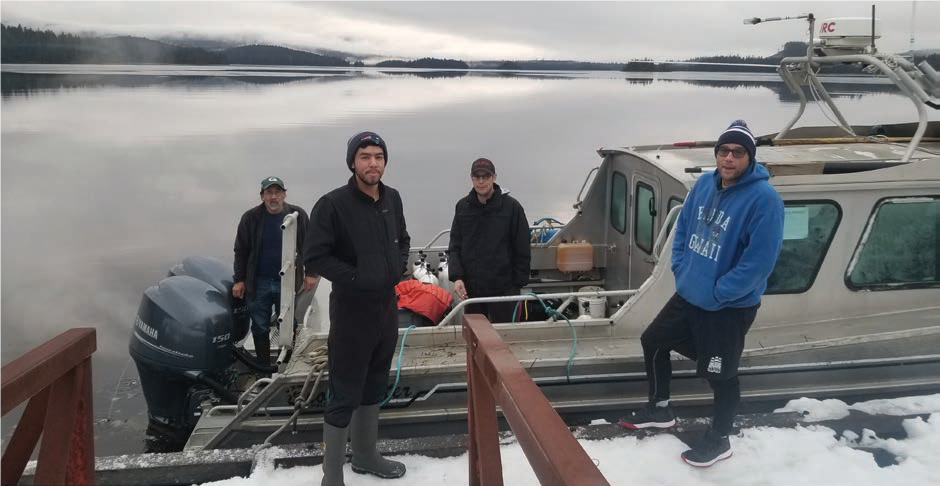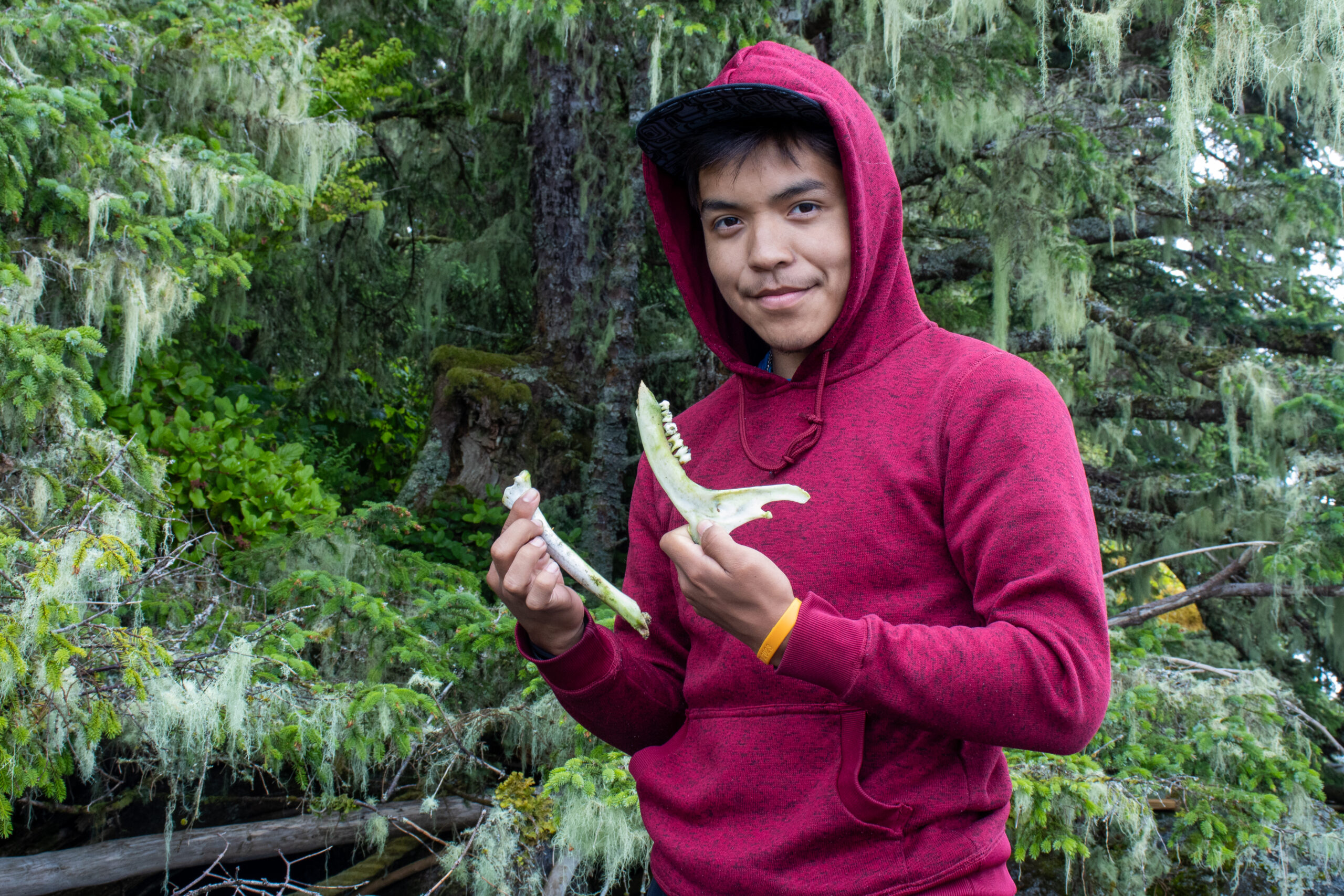The restoration of the marine habitat of Juus Káahlii (Juskatla Inlet) from industrial logging tells a really good story, says Gudt’aawt’is, Judson Brown, Marine Planning Program Manager for the Council of the Haida Nation (CHN).
“If you look at the number of old village sites that exist in Juskatla Inlet, it shows how productive the estuaries and bays used to be,” he says. “There was a lot of eelgrass. The salmon and the rockfish had a place to be safe. Sandhill cranes and blue herons hung out on the foreshore.”
A historic log sort facility at the Juskatla Inlet site was chosen from 69 sites to undergo $1.1-million in marine restoration during a three-year pilot to restore foreshore areas and replant ecologically important eelgrass beds critical for marine life.
Juus Káahlii (Juskatla Inlet) has felt the impacts of industrial logging since the 1940s, including those from handling facilities where giant logs were sorted and dumped into the ocean and loaded onto barges. The CHN website says up to 20 truckloads daily were processed at Maaman Stl’ang near Juus K̲áahlii, during peak times, causing significant damage.
“This project tells a story for the community,” Brown says. “The foreshore shouldn’t have been left in that state in the first place. For me as a Haida, it’s an acknowledgement by government and industry that they messed up and this is a way to make it right.”
The story is deeply personal for Gudt’aawt’is, Brown. His father’s family – whose Haida lineage goes back for millennia – comes from Juskatla. His dad was also a logger.
“The logging industry was a big employer. I remember seeing the barge full of logs that would go by and not seeing anything come back to the communities,” he recounts. “How many millions of dollars left Haida Gwaii and we don’t even have a swimming pool here? It seems that every small town in Canada has an ice rink supported by industry. Here industry didn’t support much.”
Experiencing the dichotomy of his father being a logger and trying to fix what’s been done is really neat, says Brown.
“This is an area where we used to harvest salmon, crabs, and waterfowl, and to see the site returned to its natural state is going to make me happy.”
“An exciting part of work is that it hasn’t been done much before, particularly in BC, where it’s a pretty large problem up and down the coast,” says biologist and project coordinator Peter Dyment. “Generally, these sites are marine dead zones that don’t permit much life, so you can have some pretty positive results with restoration.”
At many log sort sites including Juskatla, he explains, tons of infill were piled over eelgrass meadows to make it easier to transport logs from the beach to the barges. That, combined with seabed build-up of woody debris from logs, destroyed the eelgrass beds that play a vital ecosystem role for salmon and other species.
Eelgrass is the rearing ground for all types of fish and tiny invertebrates, points out project lead and biologist Leandre Vigneault, “providing a source of cover and protection and converting nutrients and sunlight into food for species at the bottom of the food chain.”
“What I find cool about this project is that those done in Washington State were really large scale with tens of millions of dollars spent,” Vigneault explains. “We don’t have that kind of budget so we’re trying techniques that are in line with the amounts of money we have.”
The project team will excavate old infill from the marine meadow and recreate the shallow, sloping foreshore where
eelgrass can be replanted. In three to five years, Vigneault says, the eelgrass should fill in and as it returns “pretty instantly, mobile creatures will start using it.”


